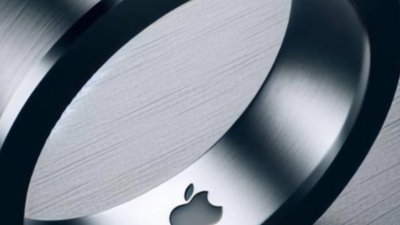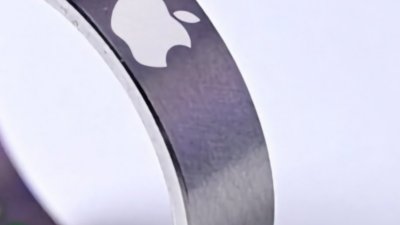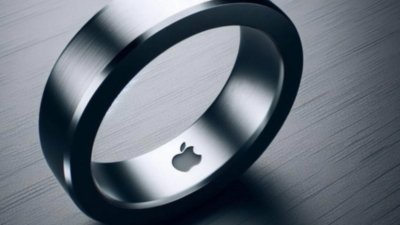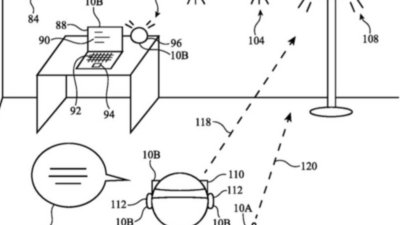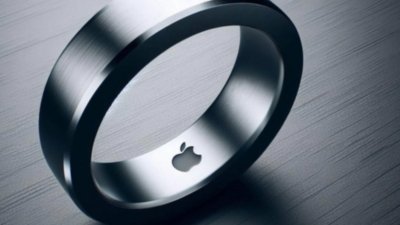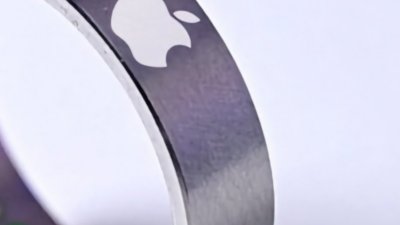An Apple Ring may be in development thanks to considerable success with the Apple Watch. Both ideally are wearables that provide users with health-tracking functionality as well as information they need, without necessarily reaching for their iPhone.
While it's convenient to have all this data available on your wrist whenever you need it, not everyone wants to wear a watch all the time. Some people may prefer to wear other timepieces for special occasions or not want to wear a watch at all.
Given that the Apple Watch Series 10 has Apple's biggest Apple Watch display ever, there are likely customers looking to downsize. A wearable ring that can track health metrics is an obvious next step for Apple.
Potentially canceled
Conflicting rumors around Apple Ring can't agree on if the device is coming at all. Mark Gurman is an excellent source when it comes to potential product launches, and he's saying Apple has given up on the product entirely.
CSS Insight chief analyst Ben Wood contradicted Gurman's report a day later in October 2024, suggesting Apple could release such a device in 2026. He suggested it's a device Apple would want to make and help enhance CEO Tim Cook's legacy in health products.
Leaker yeux1122 suggests Apple is still researching a smart ring. Competitors continue to develop and release new ring wearables without any word from Apple.
Whatever the case, Apple is developing technology that could be used in Apple Ring. Patents are always being filed around a ring wearable, so the potential for such a product still exists.
Rumors around the potential Apple Ring have quieted down since about October 2024. The lack of new information about the new wearable suggests development may at least be on pause in early 2025.
Nothing new has come up about Apple's work on a wearable Apple Ring. It may indicate the pause is going for longer than expected, or the project has been canceled entirely.
Apple Ring and smart rings
In the same way that a smart watch like the Apple Watch is basically a watch with a load of sensors and computing power crammed inside of it, an Apple Ring is the same thing, but in ring form.
Just like the wrist-worn watch, the smart ring is something that tends to include a number of sensors to track a variety of data points about the user, such as heart rate, blood oxygen level, movement, and skin temperature. These can be used to collect health-related data, which could be fed wirelessly to a nearby smartphone.
However, a smart ring presents a number of challenges to Apple and other companies, such as working at a much smaller scale that limits the technologies they can squeeze into the package. A smaller device also means limited interaction options for the user.
An Apple Watch could display a notification on its screen and lightly buzz the user with haptic feedback. An Apple Ring likely wouldn't have a screen, but haptics could at least clue the user in to a new notification on their iPhone.
Find My
Sometimes it is the simplest feature that makes people want a product. Rings are small and quick to disappear if they are put down even for a second.
Apple could offer a compelling set of Find My features not just for locating the Apple Ring, but for using it to find other products. While the device wouldn't have a display, it would have other means of communicating with the user.
If Apple used an Ultrawideband chip like the U1 in Apple Ring, users could get hints on where to walk with a simple pointing gesture. Point around and wait for the ring's vibration intensity to increase, then move in that direction.
Obviously, Find My would work the other way and provide a quick and private way to keep track of your ring.
Apple Ring vs the competition
Apple has two general rivals in the smart ring market, with one being a very close competitor in general.
The incumbent smart ring on the market is the Oura Ring. Oura launched its wearable in 2015, and its main selling point is that it looks like a piece of jewelry but is lined with sensors. It’s capable of tracking heart rate, blood oxygen, movement, and temperatures, which are all fed into a companion app.
Oura has an advantage simply because it’s been on the market for so long, and has released multiple versions of the wearable, while Apple has yet to release its own interpretation.
The other competitor is a familiar foe: Samsung.
Samsung revealed the Galaxy Ring during Galaxy Unpacked on July 10, 2024. It is a smart ring as expected, with fitness and health features.
It weighs between 2.3 and 3.0 grams and is made from titanium. It has a photoplethysmogram (PPG) to monitor blood volume changes for detecting heart rate.
There is a skin temperature sensor and accelerometer. These sensors all work together for automatic workout detection and health data gathering.
Beyond health, users get gestures when interacting with their Galaxy smartphone. It also has Find My Device capabilities.
The Galaxy Ring feature set may be very similar to the potential Apple Ring. However, it isn't clear yet what advantages Apple may have due to its wider ecosystem and continuity features.
Apple Ring could be coming soon
One month after Samsung’s January event, an unnamed “industry insider” made the claim that Apple has made considerable progress on its own smart ring. After “consistently” filing smart ring patents for years, “advanced development for commercialization appears to be imminent,” the leaker proposed.
In the same leak, it was offered that Apple could end up joining a potentially lucrative market, which will allegedly grow from $20 million in 2023 to $200 million by 2031.
The source of the leak hasn't been the most reliable, ETNews, and even then it came from an unidentifiable anonymous source. The report also doesn’t provide any scheduling for a possible smart ring launch, putting its claims further in doubt.
On February 25, Mark Gurman provided his own commentary on Apple’s wearables situation. Alongside Apple Glass claims and AirPods with built-in cameras, Gurman did mention smart rings.
Apple’s version will apparently provide health-tracking functionality, Gurman writes, but he warns that the device is “just an idea.” Though Apple isn’t actively developing it, his sources say there are people within Apple Park promoting the concept.
Apple Ring Patents
Apple has filed numerous patents over the years related to the concept of a smart ring. While it's hard to know if an Apple Ring is in active development, multiple patents typically show that Apple has some long-standing interest in the idea.
Some of the earliest references to an Apple Ring include concepts raised in 2007, as well as an Apple supplier tour from 2013 that hinted a ring was on the way. Though neither are patent filings, they at least show there has been thought in the area.
Apple Ring as a Mini Apple Watch
In the case of one application for “Devices and methods for a ring computing device,” that patent dates back to October 2015, showing it’s been a potential product for over a decade, patent-wise.
The filing basically describes a miniature Apple Watch worn on a finger. While miniature in size, it is still shown with a miniature touch-enabled screen, as well as many elements that feature in the Apple Watch itself.
Indeed, Apple was keen enough on the idea of a miniature Apple Watch that it made a continuation filing that was granted in 2019 on the same idea.
The list of capabilities proposed in the 2015 filing includes heart rate monitoring, and inductive charging, Force Touch, the Taptic Engine for haptic notifications, and an accelerometer and gyroscope for gesture input. These latter two also proposed the possibility of handwriting recognition by monitoring the finger’s movements.
It also could’ve offered voice control, Wi-Fi and Bluetooth connectivity, and NFC. There was also the possibility of it being used to control over devices, such as an Apple TV or a nearby Mac.
Gestures
To get around touching a fiddly little screen, Apple has included many gesture-related patents for its Apple Ring.
In a patent for "Skin-to-Skin Contact Detection" granted in April 2023, Apple covers multiple ways to detect contact or movement gestures between two body parts. For example, a thumb touching a finger, a thumb coming into contact with multiple fingers on the same hand, or touching other body parts.
With a gesture performed, electrodes could sense the motion or action and then perform the relevant action.
Apple also offered that the gestures could be used to control other devices.
In a 2020 patent application, Apple proposed the idea of a smart ring using ultra-wideband technology to detect a device that the user intends to interact with. Essentially, a user could point their hand at a device while wearing the ring, and with the U1 chip or similar technology, the ring would signal the device that the user is about to interact with it.
At that point, a user's interactions with the ring, such as specific movements or gestures, could be used to control the intended hardware.
Slightly adjacent to rings, Apple also considered in a patent that surfaced in 2022 how a fingertip-worn device could offer gesture controls. A wag of the finger could be used to interact with a nearby display, albeit not in a form that could easily be worn all the time by users.
Rolling and Haptics
As well as gestures, Apple considered how a ring might be controlled by the user, and how the Apple Ring could communicate back.
Granted in August 2023, the "Ring input device with pressure-sensitive input" patent describes a device that could not only provide controls to the user, but also notify them of events.
Upon receiving wireless input from a companion device, such as a smartphone, the ring can notify the user of an event by providing a haptic buzz.
Apple's patent suggests using a rotating outer band around a stationary inner band for control and input. The inner band would remain in contact with the user's finger. Rotating the external ring around the finger, similar to a large Digital Crown, could be used to switch between options or adjust settings on a sliding scale, such as volume.
Helping the Apple Vision Pro
Multiple patents have proposed the use of the Apple Ring to control other hardware, which could be useful for new items like the Apple Vision Pro. The headset doesn't include controllers, but it's feasible for a ring-like device to help further its hand recognition capabilities.
This may not be that far from becoming a reality, with a November 2020 patent for a "wearable electronic device configured to be worn on a finger of the user" mentioning a "head-mounted device comprising a display viewable by the user" that could be controlled by a smart ring.
That filing mentions an unusual ring with a sheathed element extending out towards the fingertip. The sheath could theoretically allow for granular measurement of a finger bend.
That ring would also have a sensor and visual marker, which would aid a headset in detecting its positioning and movements.
Apple could extend the Apple Ring's functionality with device continuity. Patents suggests users could point and gesture at devices to control them.
It's not just for fingers...
While the patents so far have covered rings specifically, some go beyond what a smart ring alone could do. Sometimes they're multi-part items, and may not have to be used on a finger.
A patent granted in March 2020 for an "Expandable Ring Device" proposes a two-part ring that separates and extends along the finger, with an intermediary sheathe. Expanding across two knuckles, the arrangement could again include sensors to detect motion and finger bends.
Once again, haptic feedback could be present, though spread across two areas of the finger instead of just one. Mentions of a rotatable housing, spinning buttons, and other elements also indicate there could be a lot more control options for a nearby thumb.
The previous pressure sensitivity patent does give rings as an example, but adds the rings could be worn "as part of a necklace, hoop earrings, electronic bracelet bands that are worn around the wrist, electronic toe rings, and the like."
Another from November 2023 shows Apple cares more that it has a ring shape to be worn somewhere on a part of the user. Apple says this includes "around a user's wrist, arm, leg, ankle, neck, head, and/or other body part."
The patent's thinking is that it could be worn all day, with the task of interacting with other hardware, like a highly intelligent AirTag. For example, it could be a talisman for entry through security checkpoints, and could interact with external displays to show information without having a screen of its own.
Apple Ring and Apple Intelligence
Something the size of a ring won't have a lot of computing power available, but AI models are scalable. At the least, Apple will have some kind of machine learning models running locally on Apple Ring, but data passed to the iPhone could pass through a more powerful model.
Apple Intelligence could gather piles of otherwise useless datapoints from Apple Ring and parse it into something human readable. It could be a similar process to the machine learning algorithms used to study health information from Apple Watch.
It is clear that Apple will push it's AI to every device in its ecosystem at some level. However, it will be interesting to see how Apple deals with devices with limited local processing power.
In its initial iteration, it seems Apple Intelligence is limited by the size of the Neural Engine and available RAM. Neither will ever be significant enough to run Apple's models on an Apple Ring, at least not in the short term.
watchOS 11 and the Vitals app
Every device needs an operating system, and like with HomePod, Apple could use an existing OS to power Apple Ring. The obvious choice is watchOS, which is already a pared down version of iOS.
Apple has introduced a new metric in watchOS 11 that can show a user actionable results based on multiple data points called Vitals. On Apple Watch it is based on gathering five data points during sleep.
- Heart rate
- Respiratory rate
- Wrist temperature
- Sleep duration
- Blood oxygen
If a user doesn't want to wear an Apple Watch to bed, then they could have an option of wearing an Apple Ring instead. It wouldn't be able to gather every data point, but the Vitals app doesn't need everything to work.
Vitals creates a baseline and alerts the user when two or more datasets are out of the expected range. Apple's smart ring could measure heart rate, respiratory rate, sleep duration, and possibly blood oxygen. A temperature taken from the finger wouldn't be useful data.
Of course, Apple could attempt to squeeze new sensors into the Apple Ring that would differentiate it from the Apple Watch. If the product is too redundant, it could cause the numerous existing Apple Watch users to ignore it.
Apple Ring release date and price
There haven't been any concrete rumors surrounding a potential Apple Ring release date or how much it could cost. It will likely be an expensive entry in the market, as Apple devices tend to be.
Rumors around an Apple Ring have been circulating since at least 2007. The concept was rudimentary at the time, but after the inception of the Apple Watch and wearables, it has landed on a health-focused feature set.
Apple Watch starts at $329, so it is possible the Apple Ring could act as a cheaper alternative and may cost about $199. The release date, if any, could be a year or more away judging by a lack of production rumors.
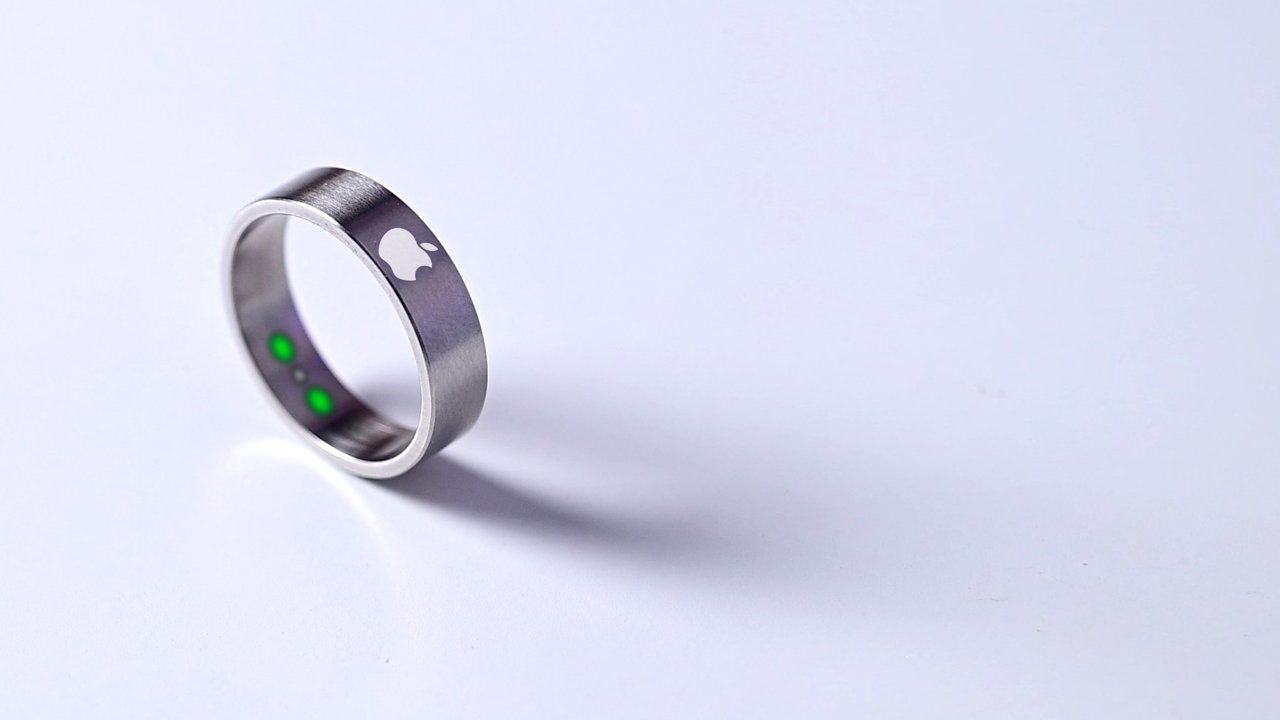
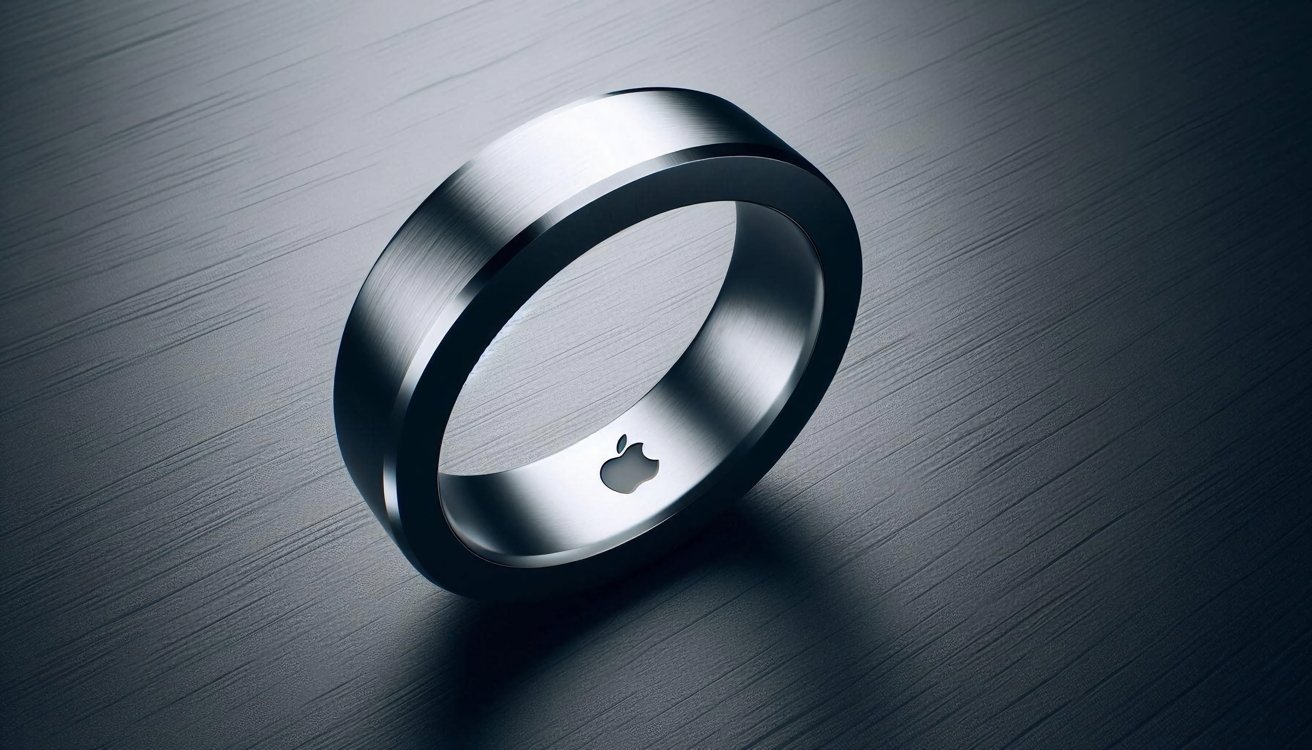
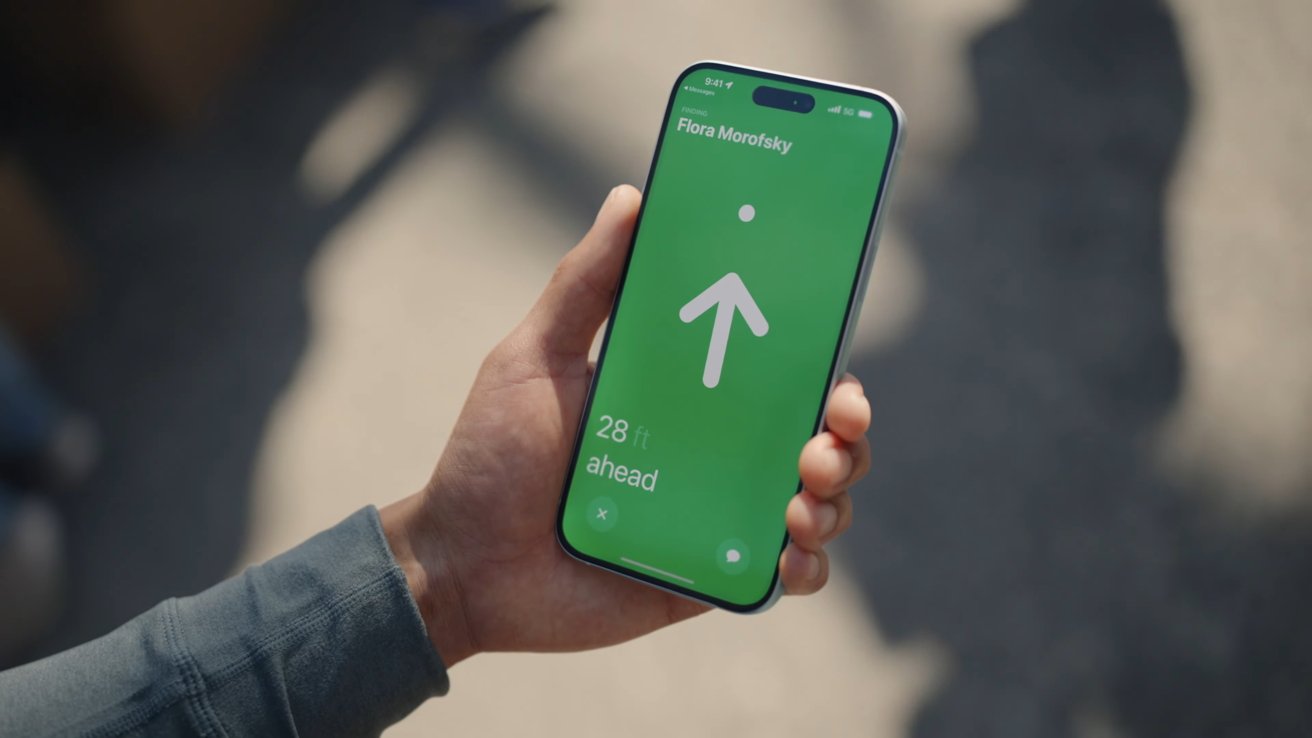
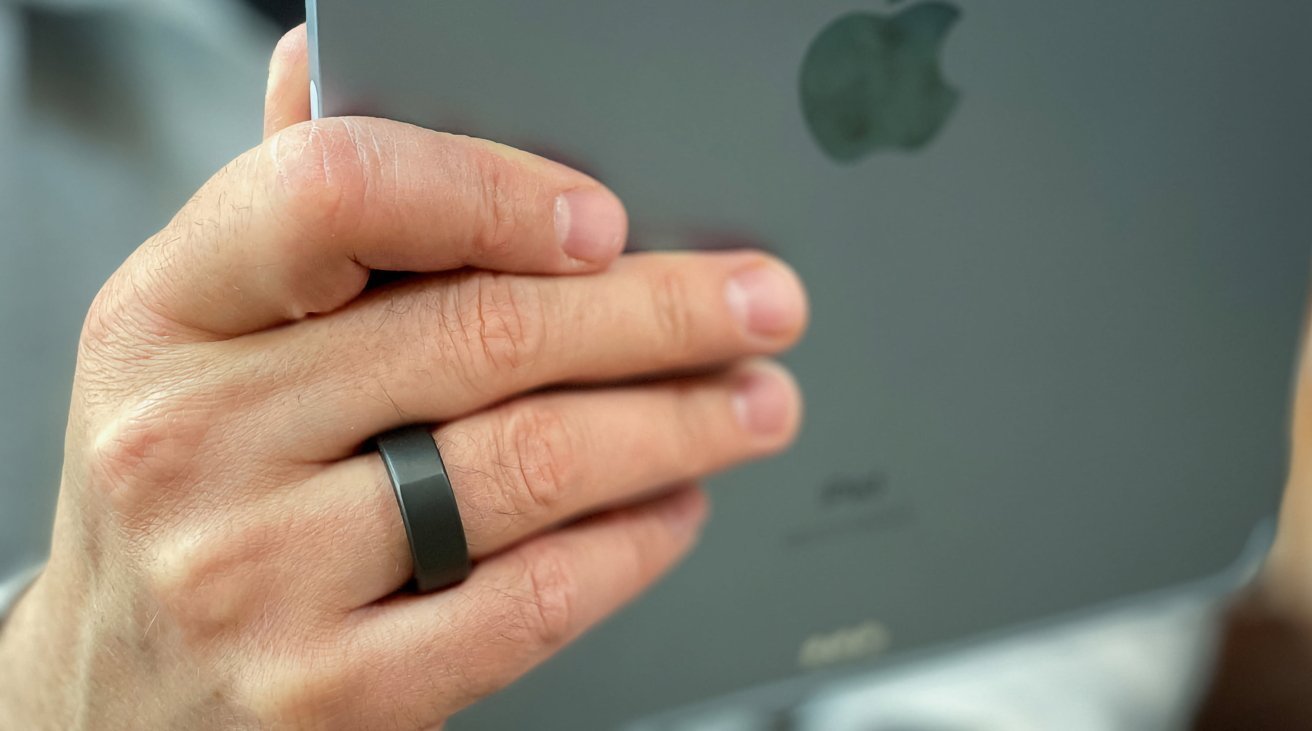

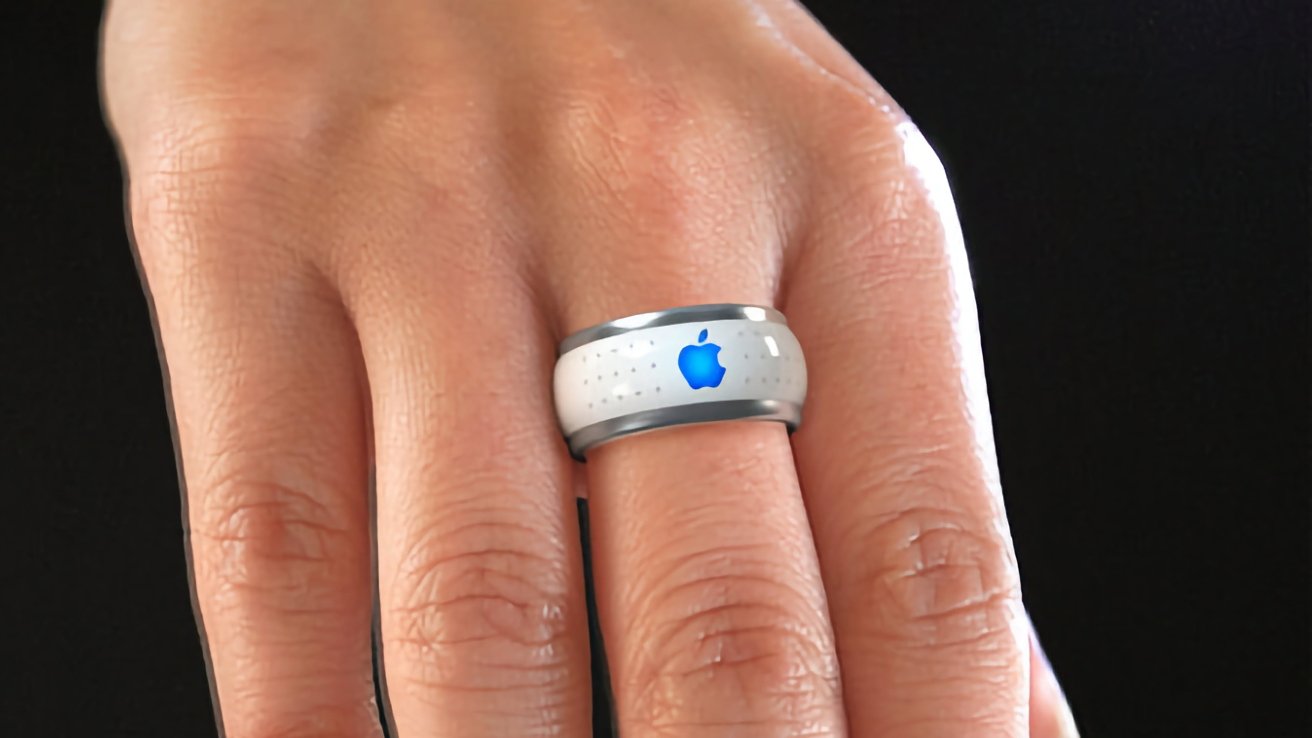
![An Apple smart ring concept from a patent application in 2015 [USPTO]](https://photos5.appleinsider.com/gallery/58723-119692-58214-118630-pat12015-xl-xl.jpg)
![Smart ring gestures could allow for the ultimate game of Rock, Paper, Scissors... [USPTO]](https://photos5.appleinsider.com/gallery/58723-119693-58214-118631-53912-108480-001-Scissors-xl-xl-xl.jpg)
![A rotatable outer ring could offer an extra dimension of control [USPTO]](https://photos5.appleinsider.com/gallery/58723-119694-58214-118632-55967-113607-001-Detail-of-Smart-Ring-xl-xl-xl.jpg)
![An expandable smart ring with a sheathe [USPTO]](https://photos5.appleinsider.com/gallery/58723-119695-58214-118633-38774-73942-Apple-Expandable-Ring-xl-xl-xl.jpg)
![Ring-shaped and ring-sized examples from a November 2023 patent [USPTO]](https://photos5.appleinsider.com/gallery/58723-119696-58214-118634-57481-117089-000-lead-Ring-devices-xl-xl-xl.jpg)
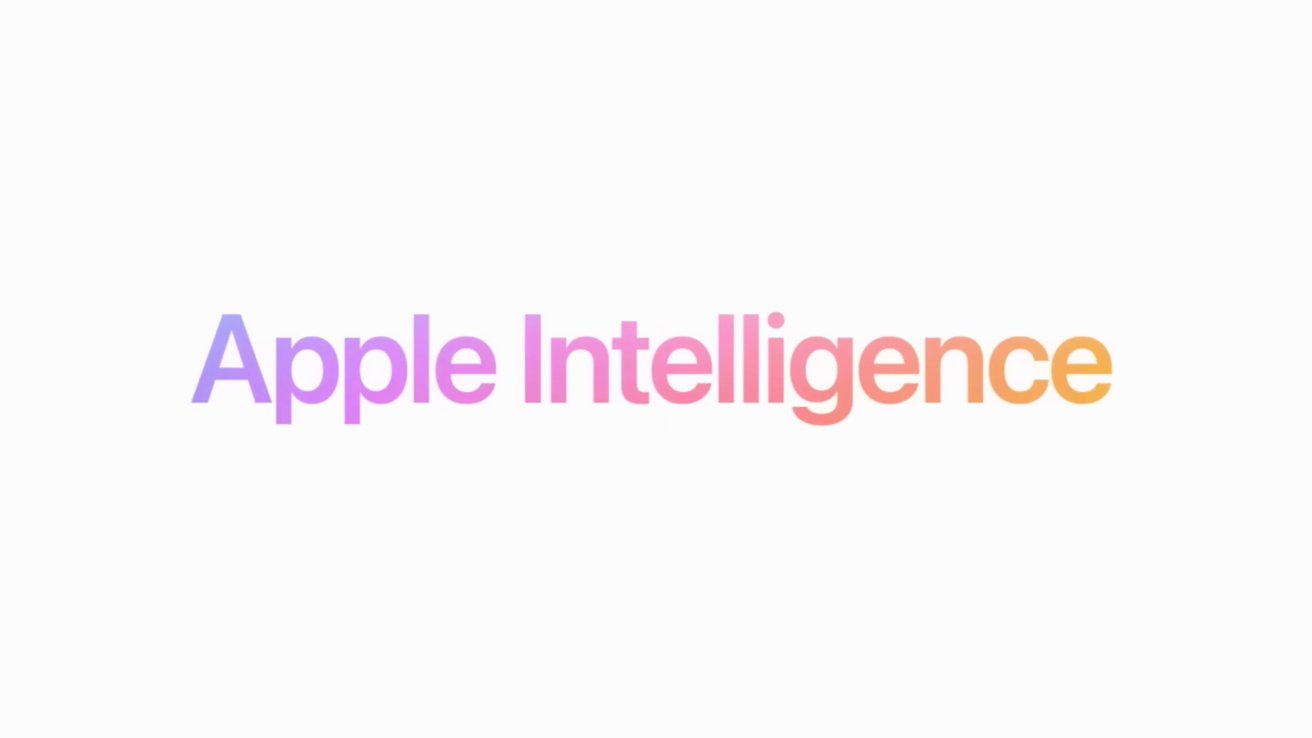
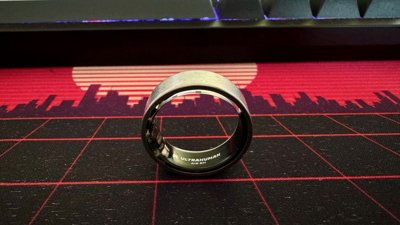
 Oliver Haslam
Oliver Haslam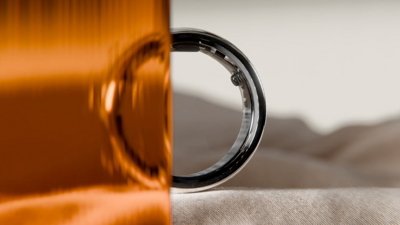
 Malcolm Owen
Malcolm Owen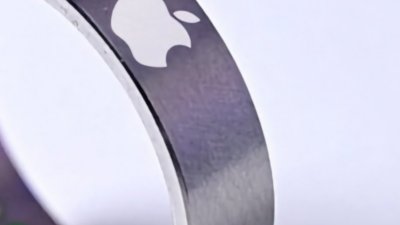
 William Gallagher
William Gallagher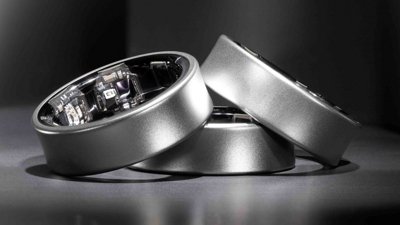
 Andrew Orr
Andrew Orr